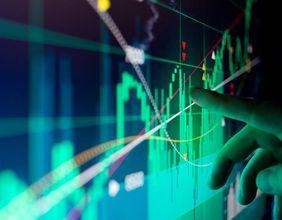Highlights
- China rolls out economic stimulus measures amid US trade talks
- Central bank actions impact global commodities and stock sentiment
- Precious metals gain attention as gold reserves grow
China has announced a sweeping economic stimulus package aimed at stabilizing its slowing economy, just days before high-stakes trade discussions with the United States. These moves, which include interest rate adjustments and increased liquidity measures, have not only energized Asian markets but are also drawing global investor attention — including those tracking the ASX200.
The People’s Bank of China (PBoC) introduced its first Required Reserve Ratio (RRR) cut for 2025, accompanied by a reduction in key policy rates. These measures are expected to pump more capital into the economy, specifically targeting consumer activity and technological innovation. Additionally, the central bank unveiled new lending mechanisms and liquidity tools aimed at promoting business confidence across multiple sectors.
Supporting the financial markets further, China’s securities regulator has proposed a set of measures designed to fortify domestic equity performance. This includes steps to stabilize capital flows and stimulate institutional participation, just as trade tensions with the US remain unresolved.
In a significant geopolitical development, US Treasury Secretary Scott Bessent and chief trade negotiator Jamieson Greer are scheduled to meet Chinese Vice Premier He Lifeng in Switzerland over the weekend. This dialogue is being viewed by analysts as a potential thaw in the trade impasse that has weighed heavily on global trade and manufacturing outlooks.
Adding to the economic narrative, China’s continued accumulation of gold has caught attention. The PBoC extended its gold-buying streak into a sixth consecutive month, increasing its reserves by around 70,000 ounces in April alone. In total, nearly 1 million ounces have been added in the recent half-year stretch. This move is perceived as part of a broader strategy to diversify reserves and hedge against currency risk, contributing to a spike in global gold prices.
Investors in Australian equities, particularly those eyeing income opportunities through ASX dividend stocks, may find these developments relevant. Shifts in global monetary policy and trade flows often influence sectors like mining, energy, and financial services — all of which are well represented in the ASX300 index.
As China's fiscal and monetary strategies evolve, companies with significant exposure to Asian trade such as Fortescue Metals Group (ASX:FMG), BHP Group Ltd (ASX:BHP), and Rio Tinto Ltd (ASX:RIO) could experience ripple effects. Similarly, firms with strong dividend histories like Commonwealth Bank of Australia (ASX:CBA) and Wesfarmers Ltd (ASX:WES) may come into sharper focus amid market recalibrations.
The developments underscore how international policy shifts — especially from influential economies like China — can cascade through global markets, influencing indices like the ASX200 and shaping near-term sentiment across sectors.






